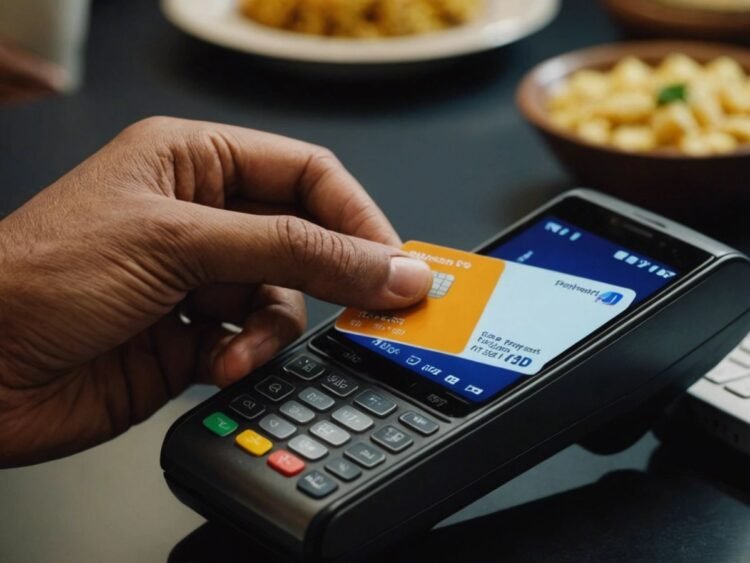Evolution of Digital Payments in India
Historical Background
India’s financial sector has witnessed a significant digital transformation, particularly in the realm of payments. The shift towards digital payment systems has reshaped transactional practices and contributed to financial inclusion. The adoption of digital payment systems like UPI and e-wallets has led to a surge in online transaction volumes, indicating a gradual move towards a cashless economy.
Key Milestones
The digital payments ecosystem in India has also grown significantly in recent years, driven by a combination of government initiatives, an increase in internet and smartphone usage, and the rise of e-commerce. One of the key initiatives is the launch of the Unified Payments Interface (UPI), which allows for real-time inter-bank transactions, and the Bharat Interface for Money (BHIM) app, which simplifies the process of making digital transactions.
Technological Advancements
The future of digital payments in India is promising. The rapid growth of digital payment systems, driven by a combination of technological advancements, government initiatives, and changing consumer preferences, is revolutionizing the financial landscape. As the fintech sector continues to evolve, it promises to bring about further innovations, making financial services more accessible and inclusive.
Government Initiatives Promoting Digital Payments
The Indian government’s demonetization initiative in 2016 was a significant turning point for digital payments. By invalidating high-denomination currency notes, the government pushed citizens towards cashless transactions. This move led to a surge in the adoption of digital payment methods, as people sought alternatives to cash.
The introduction of the Unified Payments Interface (UPI) revolutionized the digital payment landscape in India. UPI allows instant money transfers between bank accounts through mobile devices, making transactions seamless and efficient. The government’s support for UPI has been instrumental in its widespread adoption, with millions of transactions occurring daily.
The Digital India Campaign aims to transform India into a digitally empowered society and knowledge economy. This initiative includes various programs to promote digital payments, such as providing incentives for merchants to adopt digital payment methods and launching awareness campaigns to educate citizens. The campaign’s success is evident in the increasing number of digital transactions and the growing acceptance of digital payments across the country.
Economic Benefits of Digital Payments
Boost to GDP
Digital payments have a significant impact on the economic growth of India. The economic growth is measured through a proxy – real Gross Domestic Product (GDP). Digital transactions, characterized by their speed, lower cost, and convenience, contribute to increased market efficiency and overall economic activity. A well-functioning digital payment system enhances monetary policy and financial stability.
Reduction in Cash Dependency
The shift towards digital payments reduces the dependency on cash transactions. This transition not only eliminates the risks associated with carrying and transporting large amounts of cash but also saves the production cost of paper currency and coins. The convenience and safety of digital transactions make them a preferred mode of payment, thereby discouraging cash-related crimes and enhancing consumer confidence.
Enhancement of Financial Inclusion
Digital payments play a crucial role in enhancing financial inclusion in India. By providing easy access to financial services, digital transactions enable a larger segment of the population to participate in the formal economy. This inclusion boosts consumer confidence and facilitates trade in goods and services, contributing to the overall economic development of the country.
Challenges and Barriers to Digital Payment Adoption
Cybersecurity Concerns
The rapid growth of digital payment systems has brought about significant cybersecurity concerns. Ensuring the security of digital transactions is paramount to gaining consumer trust. Cyber threats such as hacking, phishing, and data breaches pose serious risks to both consumers and financial institutions. The need for robust security measures and continuous monitoring is essential to mitigate these risks.
Digital Literacy
In India, financial illiteracy and the reluctance to transition to cashless transactions remain the biggest barriers. The internet and smartphone penetration in the country is still catching up. Switching from a cash-based to a digital medium can be a challenge for people who require a deeper financial understanding. Increased awareness and education on digital financial tools are crucial to overcoming this barrier.
Infrastructure Limitations
Building infrastructure to support digital payments will help to create a more conducive environment for digital payments to thrive. This move will also help to increase the overall financial inclusion in the country and will bring more people under the ambit of formal banking and financial services. However, the current infrastructure, especially in rural areas, is inadequate. Improving internet connectivity and access to smartphones is essential for the widespread adoption of digital payments.
Future Prospects of Digital Payments in India
Emerging Technologies
The rapid growth of digital payment systems, driven by a combination of technological advancements, government initiatives, and changing consumer preferences, is revolutionizing the financial landscape. As the fintech sector continues to evolve, it promises to bring about further innovations, making financial services more accessible and inclusive. The journey towards a digital economy is well underway, and with continued efforts, India is poised to emerge as a global leader in digital payments.
Potential for Growth
India has a huge potential for digital payments. As of October 2021, the country had around 1.18 billion mobile connections, 700 million Internet users, and about 600 million smartphones. These numbers are growing rapidly each quarter. With about 25.5 billion real-time payment transactions, India ranked first in the world in terms of the number of transactions in 2020. The expected growth in the number of internet users and the e-commerce market size further underscores the bright future of digital payments in India.
Role of Fintech Companies
The digital payment ecosystem in India has grown significantly in recent years, driven by government initiatives, an increase in internet and smartphone penetration, and the rise of e-commerce. The ecosystem is supported by private players who offer a range of digital payment services. The key factors driving the adoption of digital payments in India include increased awareness, favorable government policies, quick onboarding and ease of use, smartphone proliferation and internet expansion, regulatory support, and improved technology. These factors, coupled with the enabling role of various entities and technologies, are shaping the future of digital payments in India.
Impact of COVID-19 on Digital Payment Trends
Increase in Online Transactions
The COVID-19 pandemic has significantly accelerated the adoption of digital payments in India. Online transaction volumes surged as people avoided physical contact and preferred cashless transactions. This shift was evident across various sectors, including retail, healthcare, and education.
Shift in Consumer Behavior
Consumer behavior witnessed a dramatic change during the pandemic. The necessity for social distancing and lockdown measures led to a higher reliance on digital payment methods. This period saw an increased preference for e-wallets, UPI, and contactless card payments, indicating a shift towards a more digital economy.
Government Support Measures
The Indian government introduced several measures to support the adoption of digital payments during the pandemic. These included incentives for merchants to accept digital payments and awareness campaigns to educate the public on the benefits of cashless transactions. The government’s proactive approach played a crucial role in sustaining the momentum of digital payment adoption during these challenging times.
Case Studies of Successful Digital Payment Implementations
Paytm has revolutionized the digital payment landscape in India by offering a comprehensive platform for various transactions, from mobile recharges to utility bill payments. Its user-friendly interface and extensive merchant network have made it a household name. According to a 2021 survey, Paytm’s market share in the digital wallet segment was approximately 40%.
Google Pay has gained significant traction in India due to its seamless integration with the Unified Payments Interface (UPI). The app’s ease of use and robust security features have contributed to its widespread adoption. In 2020, Google Pay accounted for 34% of all UPI transactions in India, highlighting its pivotal role in the digital payment ecosystem.
BHIM UPI, an initiative by the National Payments Corporation of India (NPCI), has been instrumental in promoting digital payments across the country. The platform’s interoperability and zero transaction fees have encouraged millions of users to switch from cash to digital payments. As of 2021, BHIM UPI processed over 2 billion transactions monthly, showcasing its impact on the Indian economy.
Conclusion
The impact of digital payments on the Indian economy has been profound and transformative. As evidenced by various studies and data, the adoption of digital payment systems has significantly reduced the reliance on cash transactions, thereby enhancing the speed, cost-efficiency, and convenience of economic transactions. With over 1.18 billion mobile connections and 700 million Internet users, India has emerged as a global leader in real-time payment transactions. The government’s initiatives, coupled with the COVID-19 pandemic, have accelerated the shift towards a cashless economy, promoting financial inclusion and reshaping transactional practices. The long-term and short-term associations between GDP and retail digital payments underscore the positive influence of digital payments on economic growth. As technological advancements continue to evolve, the future of digital payments in India looks promising, with the potential to further revolutionize the financial landscape and contribute to the nation’s economic prosperity.
Frequently Asked Questions
What are digital payments?
Digital payments are transactions that are made through electronic means, such as online banking, mobile wallets, and payment apps, without the need for physical cash.
How has demonetization impacted digital payments in India?
Demonetization in 2016 led to a significant increase in digital payment adoption as people sought alternatives to cash transactions due to the shortage of currency notes.
What is UPI and how does it work?
Unified Payments Interface (UPI) is a real-time payment system developed by the National Payments Corporation of India (NPCI) that allows instant transfer of money between bank accounts through a mobile platform.
What are the economic benefits of digital payments?
Digital payments boost GDP, reduce dependency on cash, enhance financial inclusion, and increase the efficiency of transactions, contributing to overall economic growth.
What are the challenges faced in adopting digital payments in India?
Challenges include cybersecurity concerns, lack of digital literacy, and infrastructure limitations, which hinder the widespread adoption of digital payment systems.
How did COVID-19 influence digital payment trends in India?
The COVID-19 pandemic accelerated the adoption of digital payments due to increased online transactions, a shift in consumer behavior towards contactless payments, and government support measures promoting digital financial services.







